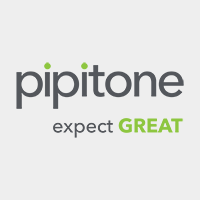 In our last blog post, we discussed why creative dynamic sequencing is more cost-effective in bringing audiences closer to the top of the marketing funnel—awareness and consideration—by reaching them when they’re engaging with both work related and non-work related media. As we discussed, an architect checking the news during a child’s soccer game has a very different mindset than when using their weather app from a job site. As advertisers, recognizing the multiple layers that make up our targets’ lives can unlock hidden value in our campaigns.
In our last blog post, we discussed why creative dynamic sequencing is more cost-effective in bringing audiences closer to the top of the marketing funnel—awareness and consideration—by reaching them when they’re engaging with both work related and non-work related media. As we discussed, an architect checking the news during a child’s soccer game has a very different mindset than when using their weather app from a job site. As advertisers, recognizing the multiple layers that make up our targets’ lives can unlock hidden value in our campaigns.
But how do you get more out of the lower portion of the funnel—conversion and purchase—to consistently create and capture value?
Building product manufacturers can achieve success, cost-effectively, by aligning their content and creative with where the target is in their journey to specification, or, where they are in the purchase funnel.
Moving a target from consideration to conversion and finally to purchase requires an understanding of what information they need to make their decision. When an architect is comparing flush wood doors to stile and rail doors, they’re likely ideating. At this point—sometimes called the Schematic Design phase—your outreach program (email, ad buys or otherwise) should inspire them with design options, colors, finishes and case histories.
At some point in time, the same architect might return to compare finishing options for a white oak veneer or to search for two-hour fire doors with a 49 STC. At this point, we’ve got a project. Here, during the Design Development phase, the outreach program should provide more specific product information and hand the contact over to the sales team. At this point in the process, closely integrating marketing and sales is just as important to a successful outreach program as aligning your content and creative with where your audience is in their journey.
As you build your outreach program, here are six steps to consider to help your brand capture value more efficiently.
- Assess your lists. Where are your most engaged contacts coming from? Where are the gaps?
- Work with internal stakeholders. Identify the audience’s journey to specification or purchase—and what key touchpoints are needed.
- Develop the measurement report. Just because something can be measured doesn’t mean it has to be measured. Keep your reporting practical and usable.
- Assess your website. What are your content offers? Is it valuable enough for the visitor to fill out a form? Is your content easy to find? Are the pixels appropriately tagged to measure each action?
- Develop a communication cadence. When are you communicating and what are you sharing with users at each phase of the journey?
- Review and adjust based on the measurement report. Every two weeks, review your progress and optimize accordingly. Avoid knee-jerk reactions.
Structuring and understanding your databases can help your brand become a trusted source of information by enabling you to provide the content each audience needs, when they need it.
